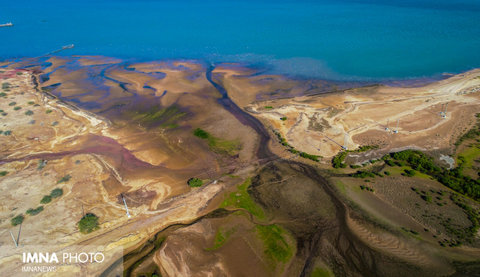Some 1,200,000 billion rials (about $285 billion at the official exchange rate of 42,00 rials) will be invested in the plan, creating jobs for around 70,000 people.
Many water-intensive industries, including steel, mining, and petrochemicals have been established in central and eastern provinces which are struggling with water shortage.
This issue has been also one of the main reasons for people to leave villages for cities. So, such projects can help sustain industries and agriculture and reverse the trend of migration.
Four routes
It is projected to supply water through four lines. The first line, extending 820 kilometers will transfer water from the Persian Gulf to the provinces of Hormozgan, Kerman, and Yazd. Some 16,000 persons will be employed to implement the project.
The second line, extending 1,550 kilometers, will supply water from the Persian Gulf to the provinces of Kerman, South Khorasan, and Khorasan Razavi. Some 30,000 persons will be employed to implement the project.
The third line, extending 910 kilometers, will supply water to the provinces of Yazd and Isfahan. Some 14,000 persons will be employed to implement the project.
And the fourth line, extending 820 kilometers, will transfer water from the Sea of Oman to the province of Sistan-Baluchestan. Some 10,000 persons will be employed to implement the project.
Benefits and harms
A number of countries have made attempts to transfer water and have achieved benefits. However, redistribution of water resources is inevitably involved in changes in the ecological environment and endangering nature.
Changes are divided into two negative and positive impacts, including water supply in water-deficient areas, facilitating the water cycle, improving meteorological conditions in the recipient basins, mitigating ecological water shortage, repairing the damaged ecological system, and preserving the endangered wild fauna and flora.
The negative impacts include salinization and acidification of the donor basins, damage to the ecological environment of the donor basins, and both sides of the conveying channel system, an increase of water consumption in the recipient basins, and spread of diseases, etc.
Pros and cons
Some experts believe that these projects entailing economic and environmental burden are no solution to droughts, and demanded the water transfer projects to be dismissed due to the irreparable damages to the environment namely deforestation, wildlife habitat destruction, biodiversity degradation, improper land change use, and contaminated seawater.
Mehdi Zare, a seismic expert, says human intervention which speeds up climate change, is one of the major threats to today’s human life and even the future. One of the threats is that transferring water to dry areas increases the population burden in those areas while imposing unsustainable development where there is no suitable climate for such a concentration.
He went on to note that a mix of rapid population growth, disproportionate population distribution, inefficient agricultural methods, mismanagement, and thirst for development are the main reasons behind water shortages.
This is while, some other experts, including the Department of Environment (DOE) chief Issa Kalantari, support water transfer projects, arguing that to provide the amount of water needed for drinking purposes and industries, there is no choice but to use seawater, the incredible and abundant resources, now and in the future.
By Mehdi Garshasbi
Tehrantimes


Your Comment